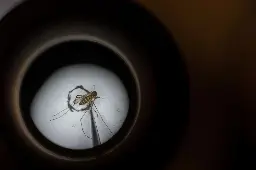How Climate Change Spread This Deadly Mosquito-Borne Illness to the US Northeast
How Climate Change Spread This Deadly Mosquito-Borne Illness to the US Northeast
Eastern equine encephalitis, a rare mosquito-borne disease, has been spreading as temperatures rise.

A 41-year-old man in New Hampshire died last week after contracting a rare mosquito-borne illness called eastern equine encephalitis virus, also known as EEE or “triple E.” It was New Hampshire’s first human case of the disease in a decade. Four other human EEE infections have been reported this year in Wisconsin, New Jersey, Massachusetts, and Vermont.
Though this outbreak is small and triple E does not pose a risk to most people living in the United States, public health officials and researchers alike are concerned about the threat the deadly virus poses to the public, both this year and in future summers.
There is no known cure for the disease, which can cause severe flu-like symptoms and seizures in humans 4 to 10 days after exposure and kills between 30 and 40 percent of the people it infects. Half of the people who survive a triple E infection are left with permanent neurological damage.
Because of EEE’s high mortality rate, state officials have begun spraying insecticide in Massachusetts, where 10 communities have been designated “critical” or “high risk” for triple E. Towns in the state shuttered their parks from dusk to dawn and warned people to stay inside after 6 p.m., when mosquitoes are most active.
Like West Nile virus, another mosquito-borne illness that poses a risk to people in the U.S. every summer, triple E is constrained by environmental factors that are changing rapidly as the planet warms. That’s because mosquitoes thrive in the hotter, wetter conditions that climate change is producing.